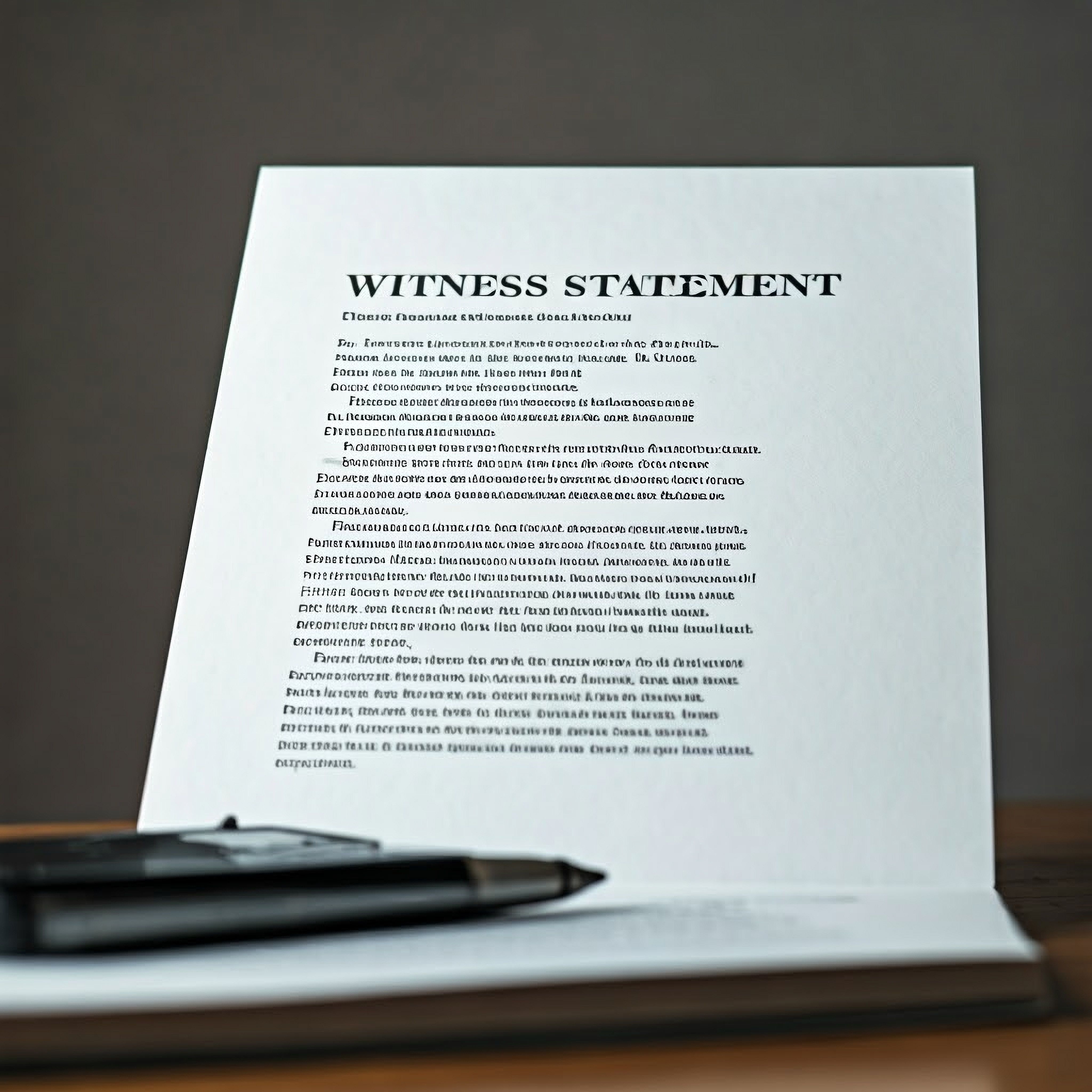By Andrew Ness

Drafting Effective Witness Statements
Using Witness Statements in Arbitration (8/31/24) addressed the basics for using written witness statements in lieu of direct testimony in arbitration. This post provides tips for drafting effective witness statements.
Practical Tips for Drafting Effective Witness Statements
- Witness statements should be detailed and specific: Remember the witness statement is the witness’s direct testimony, not merely an outline or starting point for more detailed oral testimony at the merits hearing. The statement should cover whatever evidence the witness is to provide with all the detail and specifics as though the witness had testified in person.
- Break up length with topic headings: Statements for major witnesses may be 40 to 60 pages (or even longer), which may be cumbersome. Even a long statement can read well and smoothly if broken up with topic headings. Keep the “testimony” concise and factual.
- Explain the witness’s background and basis for testimony: Describe the witness’s involvement in the project and with the issues in the statement at the beginning to provide a basis for the testimony. It may be necessary to provide ashort summary of the witness’s relevant background and experience regarding the events described. Include enough information to show the witness was in a position to know the facts in the statement, without overdoing it.
- Be concise: Beginning the statement with three pages of background and experience before reaching the issues in the case is not compelling. Summarize the witness’s prior work experience and education with reference to a detailed resume or CV included as an exhibit,
- Use short, numbered paragraphs: Use numbered paragraphs and keep each paragraph short, covering a single point. The numbering is for ease of reference in briefing, but also helps keep the narrative organized. Include page numbers as well as paragraph numbers.
- Identify subjects with topic headings: Use topic headings liberally to identify the different subjects of the testimony. This makes it much easier for the arbitrators to find the subject they are interested in when looking for specific points.
- Tell the story: Providing the testimony in the form of a story as much as possible makes it more interesting and readable. Ideally the witness statement tells a chronological story, but the key is to get all the facts into the record, clearly but succinctly.
- Keep it factual and specific. Arbitrators won’t give much weight to opinions and generalizations (and opinions from a non-expert may be entirely disregarded) unless the underlying facts supporting the conclusion are spelled out. Generalizations should be backed up by multiple specific examples. It is acceptable, after listing multiple times where the same situation occurred (for example, requests for information were frequently submitted asking for basic information readily obtainable from the drawings and specifications), to say something like: “This pattern of unnecessary RFI’s recurred frequently during the period of [date] to [date].” The conclusion should follow clearly from the examples and be as specific as possible. Arbitrators give little weight to blanket assertions such as: “They were always asking ridiculous questions.”
- Refer to documents in the record: Whenever talking about something that was documented in the record, include a reference to the document, including date, type of document (letter, email, meeting minutes, etc.) and exhibit number. Putting the reference in a footnote (not an endnote) avoids breaking up the text too much. Stating that something is documented is not helpful unless you provide the arbitrators an easy way to find the document being referenced. Using the exhibit number only is less helpful to the arbitrators than including enough identifying information so they can avoid looking up exhibits with which they are already familiar.
- Include document snippets: Pasting the most relevant snippets from key documents into the body of the witness statement is increasingly popular. This can be particularly helpful and effective when the witness is adding context to or elaborating on an exhibit, or describing what a drawing is showing. This should be reserved for key documents, however, because, if overdone, it makes the statement too long.
- Add a photo: Adding a picture/head shot of the witness to the cover sheet of the witness statement is another popular technique. This helps the arbitrators quickly recall the witness after the hearing, when deliberating and preparing the award. To many arbitrators faces are more memorable than names.
- Avoid repetition: Repetition is the bane of witness statements; it invites skimming rather than close reading. Even important points don’t need to be restated several times. State the point clearly once. Referring back to a key point when it ties into later testimony (with a reference to the prior paragraphs) is acceptable to refresh recollection. The arbitrators may have a large pile of witness statements and exhibits to review. They will appreciate a clear, focused and concise witness statement that avoids repetition.
- Avoid repetition in rebuttal statements: There is a temptation to repeat information from the original statement before adding t rebuttal information. Resist this. Again, a brief reference to the earlier testimony (and telling the arbitrators where to find it in full, if desired) is preferable to repeating it. Repetition in a rebuttal statement leaves the impression that counsel thought the witness should file something in rebuttal, but the witness has very little, if anything, to add. More importantly, it risks burying truly new and important testimony that the witness can add in rebuttal.
Takeaways
Drafting effective witness statements requires collaboration between counsel and the witness. Witness statements should tell the witness’s story, but must be concise, specific and factual. Avoid repetition. Refer to documents in the record, adding snippets for key documents. Adding a photo of the witness can jog the arbitrators’ memory.
Stay tuned for the upcoming post discussing how to draft exhibits to witness statements and the attorney’s role in preparing witness statements and exhibits.
For more information on drafting witness statements, see Chapter 8 in Construction Arbitration: The Advocate’s Practical Guide (ABA Press 2023) (listed on our Recommendations and Resources page. Recommendations and Resources

